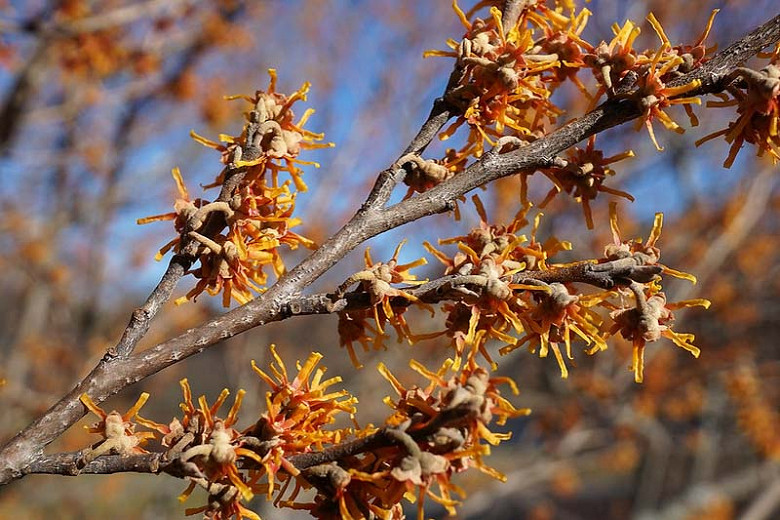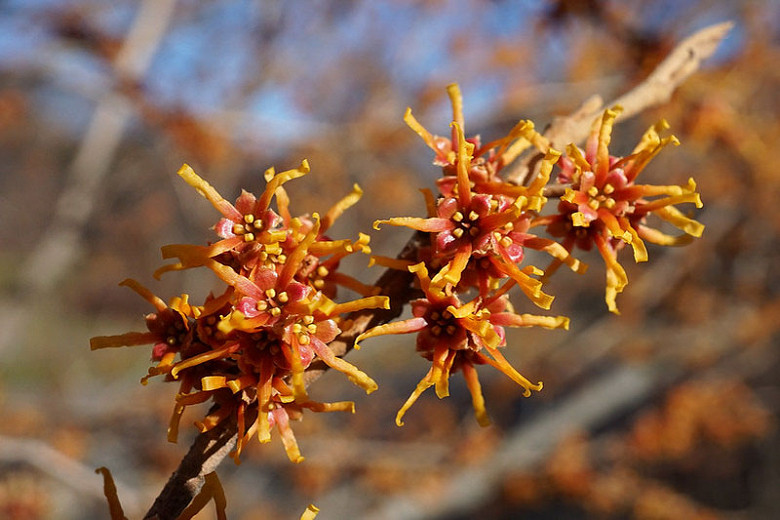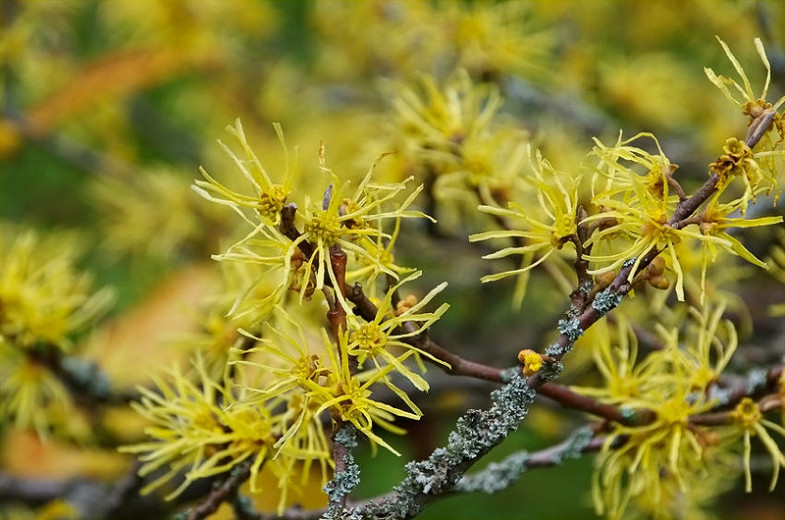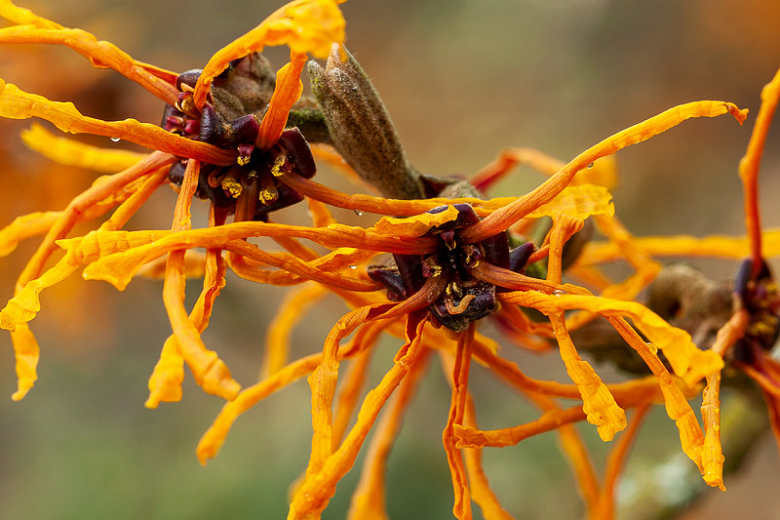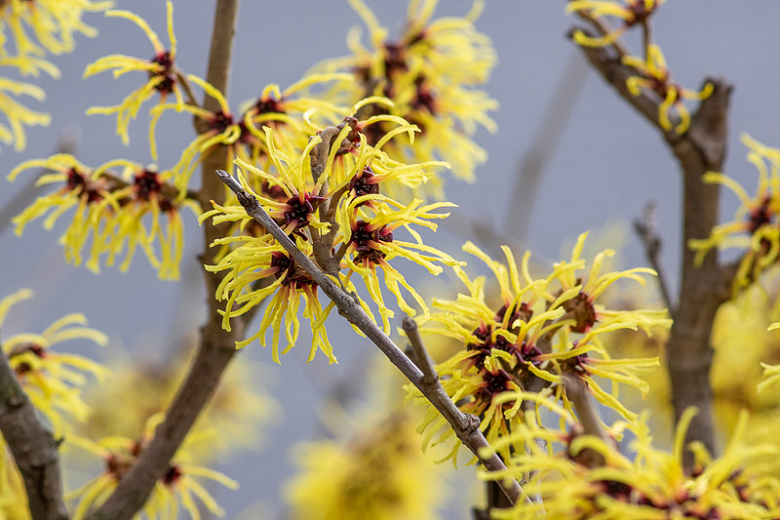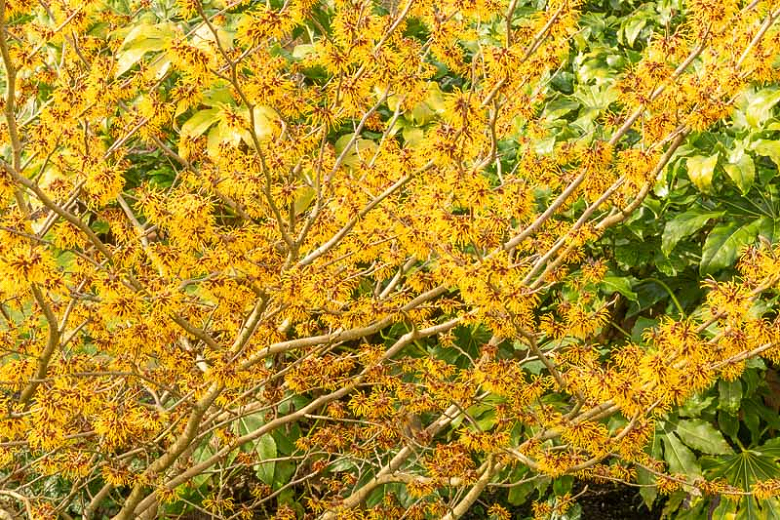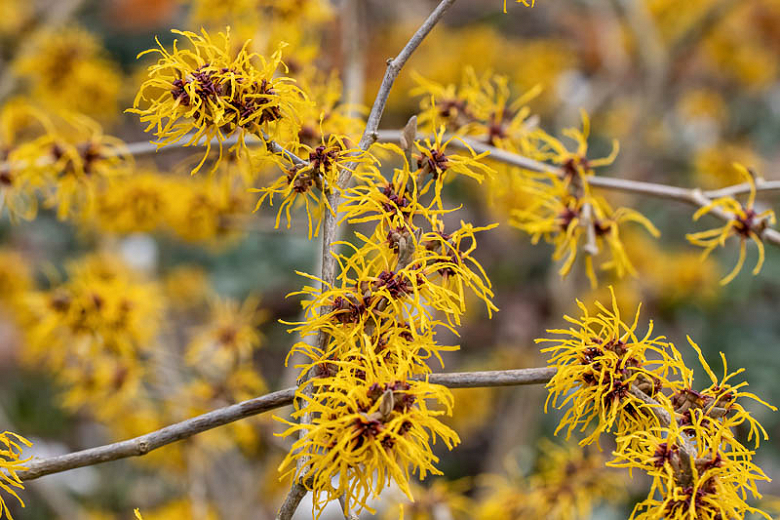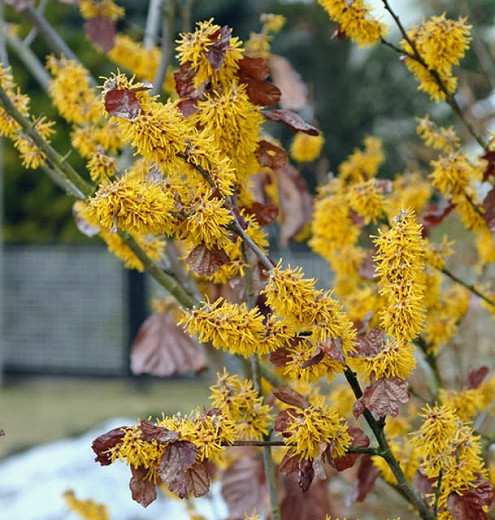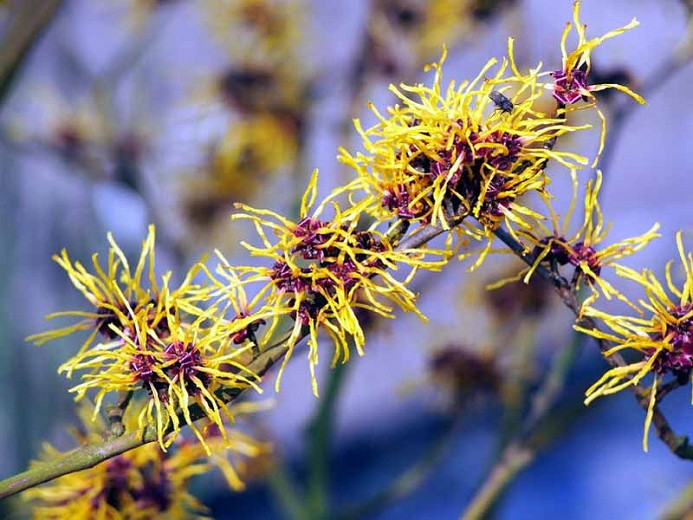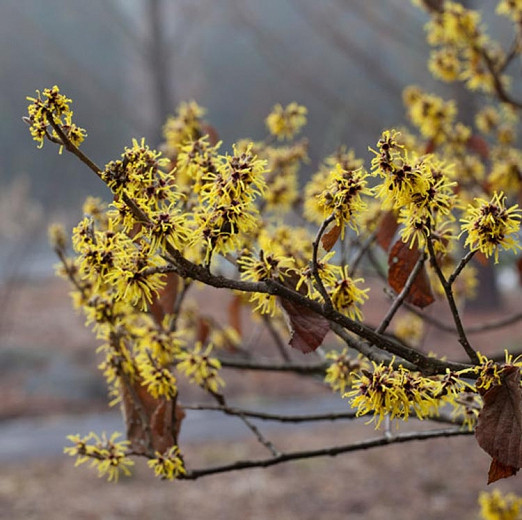Hamamelis vernalis (Ozark Witch Hazel)
Adding winter interest to the garden, Hamamelis vernalis (Ozark Witch Hazel) is a large, dense, deciduous shrub or small tree of upright to rounded habit. It boasts dense clusters of fragrant, frost-proof, bright yellow to dull orange to red-orange flowers from mid-winter to early spring. Borne on naked branches, each flower consists of 4 narrow, crinkled, strap-shaped petals with dark red calyces. On very cold days, the strap-like petals curl up, and they unfurl as the weather warms. Emerging light green with bronze tints in spring, the foliage of ovate-rounded leaves, 3 in. long (7 cm), matures to dark green as the season progresses, before turning shades of rich butter yellow to golden yellow in the fall. The dead foliage often persists on the shrub throughout the winter. Fruit ripens in the fall, then split open to expel black seeds that are attractive to birds. Relatively short-lived (30–50 years), Ozark Witch Hazel is tolerant of wet or dry sites, sunny or shady sites, and gravelly or clay soils. It is a great plant for shrub borders, hedges, massing, naturalizing, or erosion control.
- Grows up to 6-10 ft. tall (180-300 cm) and 8-15 ft. wide (240-450 cm). This Witch Hazel will spread by underground stolons to form large colonies.
- This plant is best grown in full sun to part shade in average, medium moisture, well-drained soils. Prefers organically rich, moist, acidic soils. Best flowering in full sun.
- Mass in mixed shrub borders for dramatic winter blooms. Great flowering shrub for cottage gardens, rain gardens, woodland gardens, or as a screen and hedge. Perfect as a specimen plant.
- Low maintenance, this plant is deer resistant. Keep an eye out for caterpillars, Japanese beetles, leaf gall aphids, weevils, scale, leafroller, leafminer, and powdery mildew.
- Promptly remove any suckers to prevent spread.
- No regular pruning is required. Simply remove any dead, damaged, or weak shoots. Prune in spring after flowering if you need to control shape and size.
- Propagate by seeds or rooted stem cuttings.
- Hamamelis vernalis is native to the southern and central United States.
Requirements
| Hardiness | 4 – 8 |
|---|---|
| Heat Zones | 5 – 9 |
| Plant Type | Shrubs, Trees |
| Plant Family | Hamamelis – Witch Hazels |
| Exposure | Full Sun, Partial Sun |
| Season of Interest | Spring (Early)FallWinter |
| Height | 6' – 10' (180cm – 3m) |
| Spread | 8' – 15' (240cm – 4.5m) |
| Spacing | 144″ – 240″ (360cm – 600cm) |
| Water Needs | Average |
| Maintenance | Low |
| Soil Type | Clay, Loam, Sand |
| Soil pH | Acid, Neutral |
| Soil Drainage | Moist but Well-Drained, Well-Drained |
| Characteristics | Fragrant, Showy |
| Native Plants | United States, Midwest, Missouri, Southeast, Arkansas, Southwest, Oklahoma, Texas |
| Tolerance | Clay Soil, Deer |
| Attracts | Birds |
| Garden Uses | Beds and Borders, Hedges and Screens, Rain Gardens |
| Garden Styles | Informal and Cottage, Prairie and Meadow, Traditional Garden |
